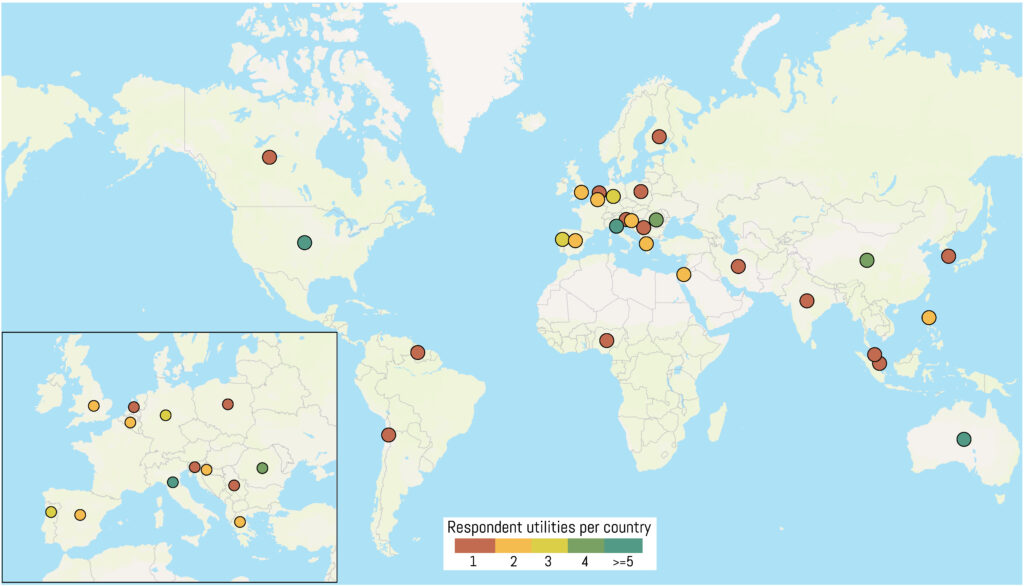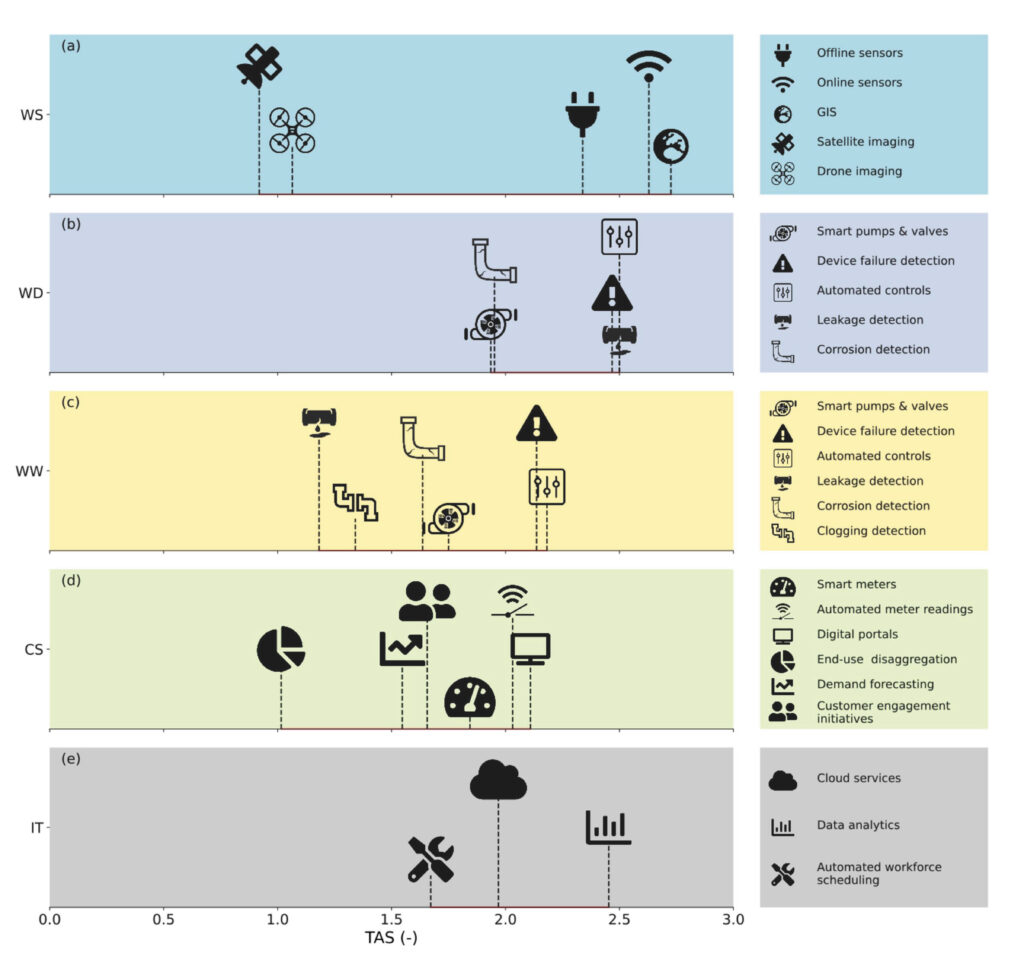Digital transformation in the water sector: Insights from the Smart Water Survey
In today’s changing world, the influence of digital technologies can be seen in nearly every sector. The water utility sector is no exception. But how is the digital transformation impacting the water sector and what are the drivers behind it? What are its key-enabling technologies?
These are some of the questions addressed in a recent open-access study published in npj Clean Water. The study, led by a team of researchers from TU Berlin-ECDF and international collaborators from the Lawrence Berkeley National Laboratory, Politecnico di Milano, KWR Water Research Institute, and Griffith University, sheds light on the current state of digital transformation in water utilities through a global perspective.
Climate change and urbanisation have put water security in the spotlight. Water utilities worldwide are facing a double-edged sword: while they are directly impacted by climate change, their own operations contribute to greenhouse gas emissions. Digital technologies have shown promising results in making utilities more sustainable and their operations more efficient through the urban water cycle.
Sixty-four utilities from 28 countries replied to our online Smart Water Survey, and their answers reveal a clear trend: digital transformation has already taken root in the water utility sector, regardless of the unique challenges faced by each region and different paces of technology adoption. Big and small, public and private, recent and more experienced utilities have all started embracing the wave of digitalisation, reshaping the way they operate and manage resources. Another major contribution of our study is the identification of the drivers and key technologies enabling the digital transformation of water utilities. Learning from utilities that are leading the digital transformation journey enables other utilities to make informed decisions about their digital strategy, allowing them to prioritise the adoption of specific technologies based on their degree of penetration, effectiveness, and best practices.
Geographical distribution of water utilities that responded to the Smart Water Survey. Colored circles represent the location of the 64 water utilities that provided complete responses to the survey (after data cleaning). Each circle is placed in the geographical center of a country, with the color bar indicating the number of respondents per country. In total, respondent utilities were from 28 countries worldwide.
Key Drivers and Enabling Technologies
Our study wraps up with three main insights:
- Water supply and distribution systems often act as a catalyst for further technology adoption in the entire urban water cycle.
- Prospective economic benefits are still the primary driving force behind the digitalisation efforts of water utilities. This means that beyond the obvious advantages of sustainability and streamlined operations, utilities are motivated by the potential economic gains digitalisation can offer, followed by government regulation and hydroclimatic factors.
- Different subdivisions of the urban water cycle are adopting digital technologies at varying speeds, resulting in a diverse landscape of technology adoption.
Penetration of digital technologies in different water utility subdivisions. The technology availability score (TAS) is computed for individual technologies and refers to their application to individual subdivisions in the entire water utility sector: a WS; b WD; c WW; d CD; and e IT. TAS values of 0 indicate low penetration and availability of a given technology, and values of 3 indicate high penetration and availability.
For a more in-depth analysis of these main findings, be sure to check out the full paper!
Towards a digital water future
Our survey also highlights a need for continued research and monitoring. While certain drivers of digital transformation were identified, we couldn’t establish a direct link between these drivers and the actual progress of digitalisation in practice. Other questions remain open, besides expanding the coverage of interviewed utilities and disentangling local nuances that can affect a utility’s digitalisation progress. What is the role of individual leadership in driving the digital transformation? How can policy facilitate impact-oriented technology development? What is the role of consumers in a utility’s decision-making processes? Answering these questions requires future monitoring of technology uptake in the water utility sector.
As we move towards a digital future, water utilities must stay vigilant, embracing innovation and exploring the untapped potential of technology in pursuit of water security and climate resilience. The journey towards a digitally empowered water utility sector has just begun, and it promises to reshape the way we manage our most precious resource.
We invite you to read our full study and join us on the digital water journey by registering for the IWA Digital Water Summit in Bilbao on 14-16 November 2023. Registration is now open.
Article citation
Adapted from: Daniel, I., Ajami, N.K., Castelletti, A. et al. A survey of water utilities’ digital transformation: drivers, impacts, and enabling technologies. npj Clean Water 6, 51 (2023). doi.org/10.1038/s41545-023-00265-7 under the Creative Commons Attribution 4.0 International License.




